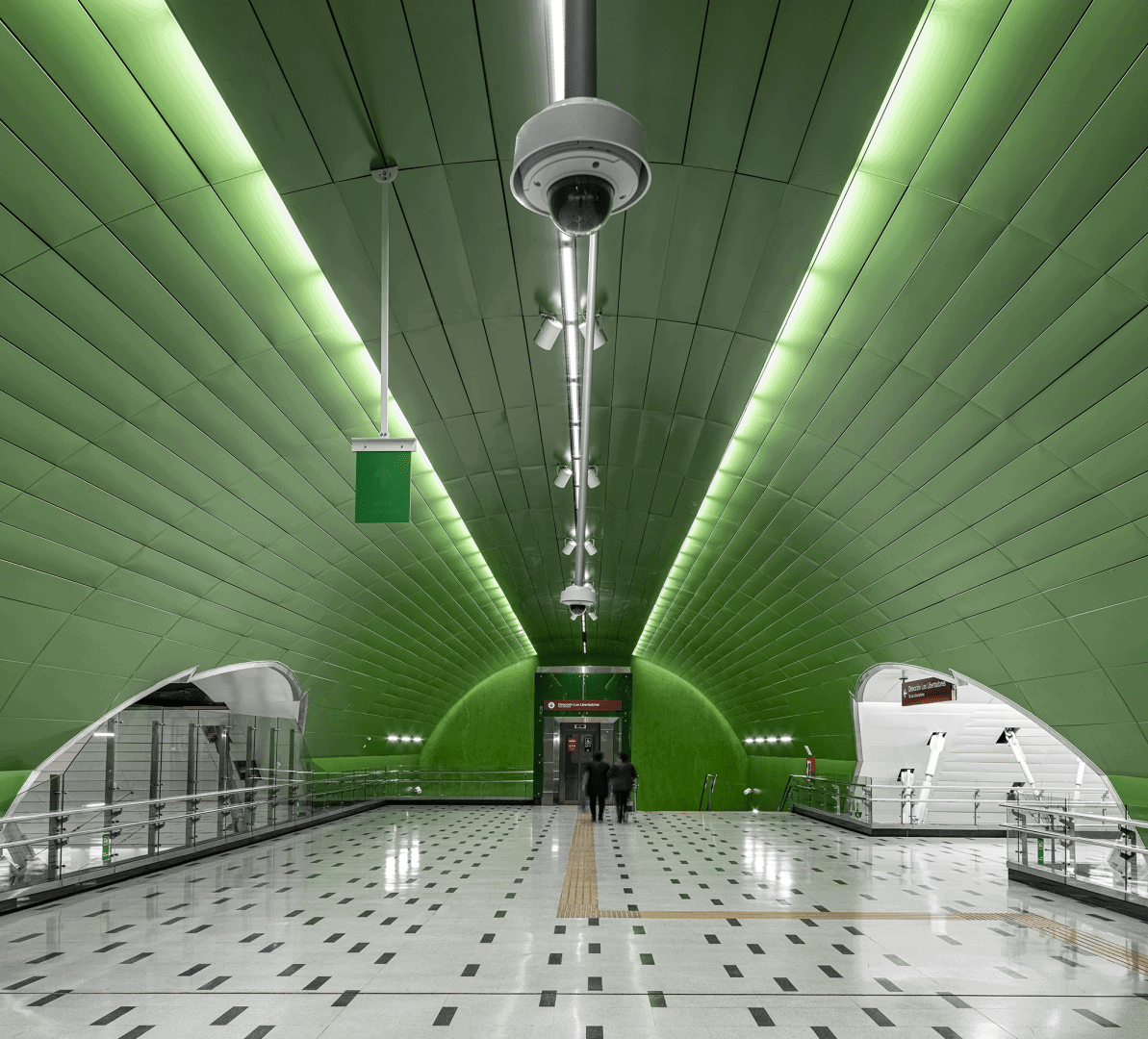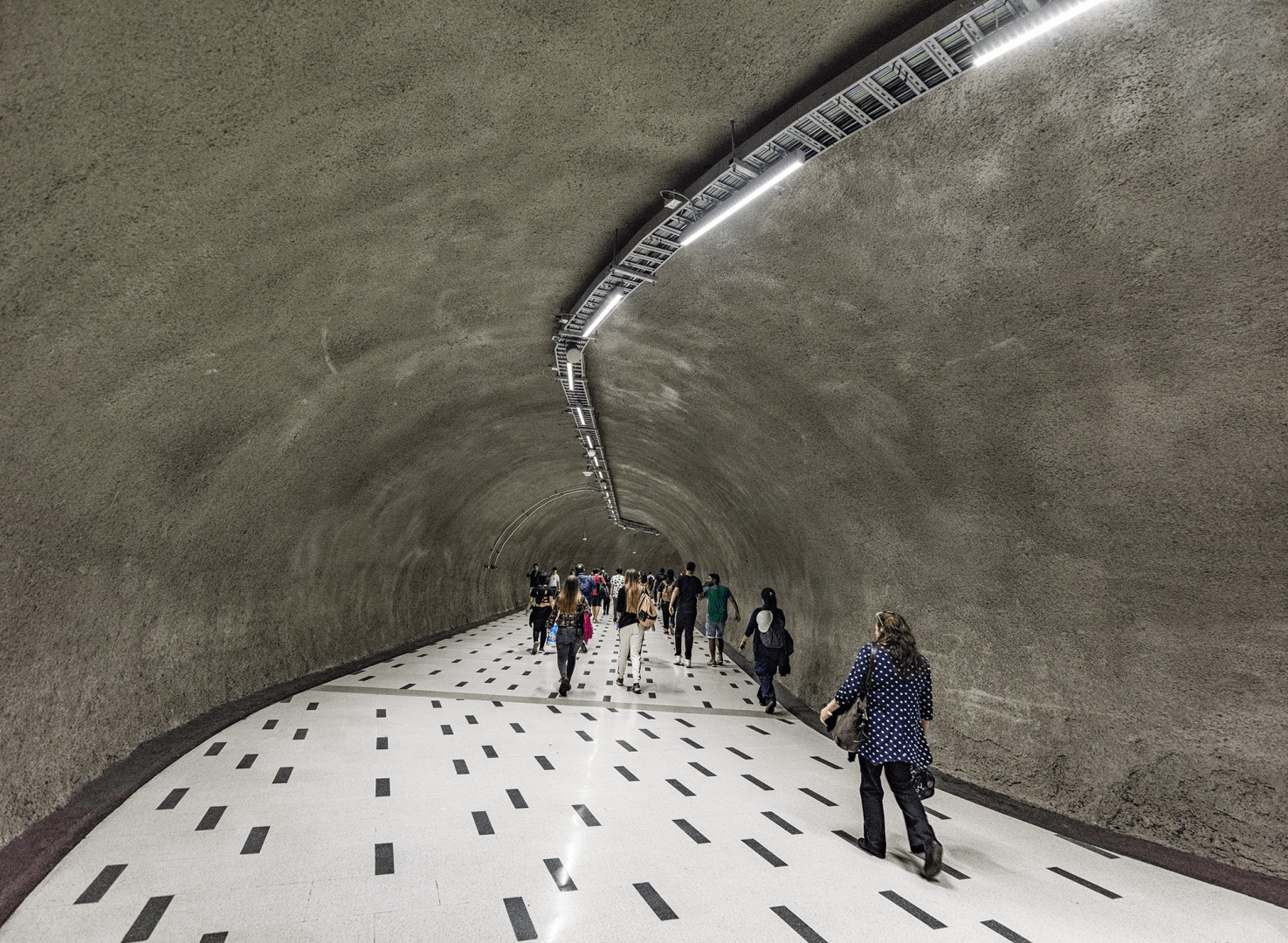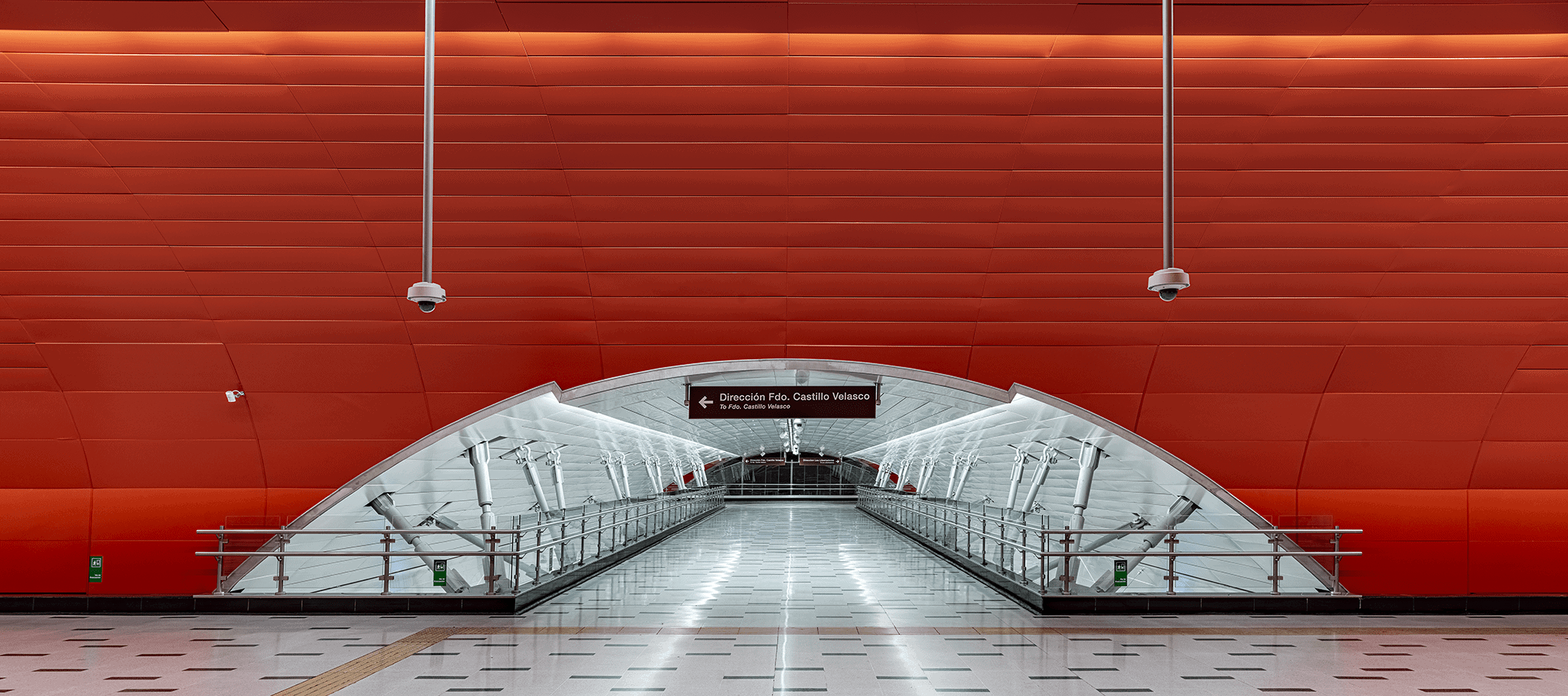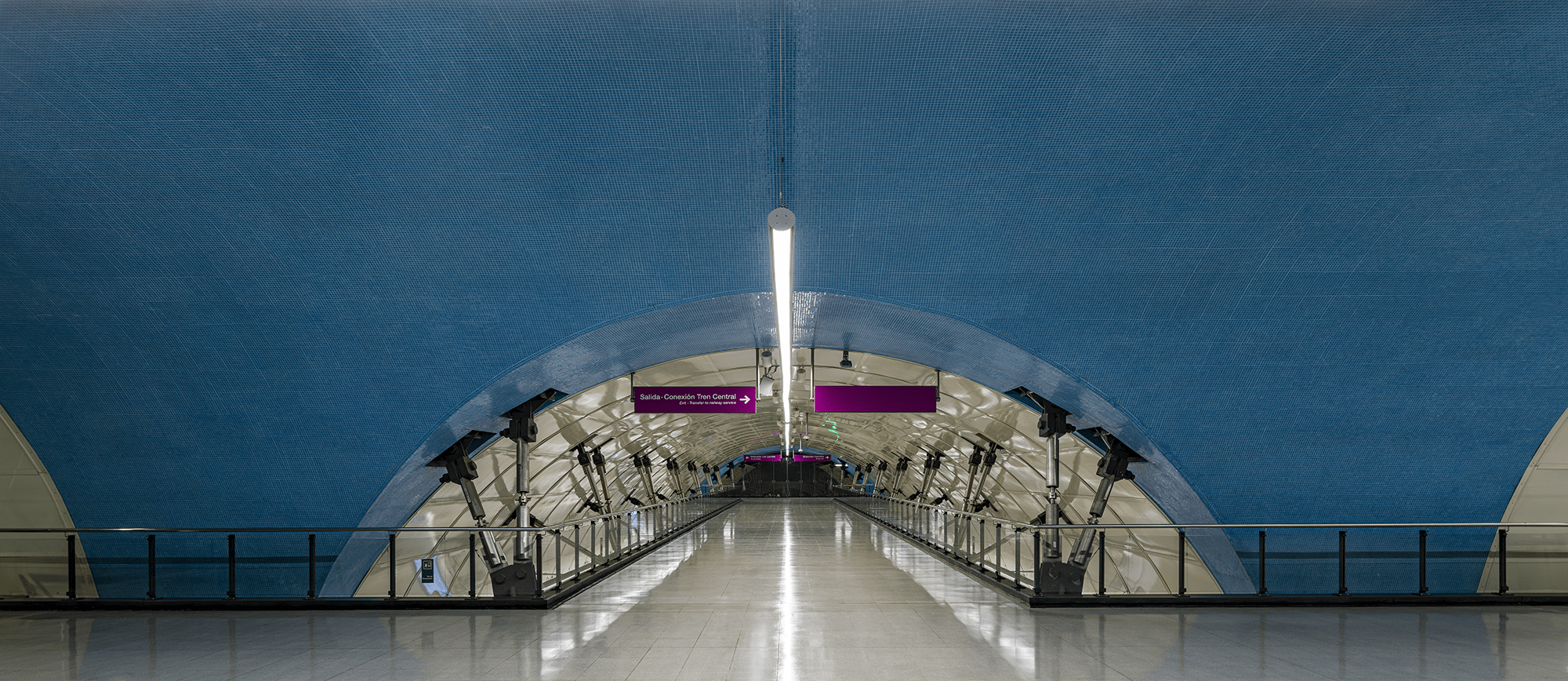Santiago de Chile’s Metro, Santiago de Chile (Chile) |
The Mirror Image of Waiting
Santiago de Chile, Chile
Santiago de Chile Metro Line 3 projectThere is a spot where the hustle and bustle of Santiago de Chile s reflected on the ceiling. There, the over two and a half million daily metro users can let their gaze wander for a few seconds before traversing the endless black and white tile corridors of the metropolitan railway stations. It’s the largest network of its kind in South America, with seven lines spanning 140 kilometers and connecting 136 stations.
The metal roof over the escalators of the Santiago metro’s line 3 stations also reflects the colors and lights of one of the most advanced lines in Latin America. With its automated trains, security cameras in the train cars, and platform doors, it connects 17 stations between Quilicura Square and the Fernando Castillo Velasco terminal, passing through the areas of Quilicura, Conchalí, Independencia, Santiago, Auñoa, and La Reina.




The 3 is also the only line that connects with the rest of Santiago’s underground tracks. Its opening led to an increase in traffic of some 245,000 people each day. It is actually in one of these stations where you can find this mirrored ceiling: Auñoa, where line 3 meets the 6, the newest line in the city. This line’s construction was also one of the greatest challenges in the history of Santiago’s metro.
Building just the 3,000 meters of the second section (which was done by Ferrovial) required digging out 125,000 cubic meters of earth. Some 10,500 cubic meters of shotcrete and 675,000 kg of structural steel were needed to support the tunnels. In addition, the geotechnical complexities of the landscape made it necessary to revise the project constantly.
But today, under the blue and white roofs of the stations reflecting the travelers waiting below, the bygone challenges fade into the background. Automatic trains run the tracks without stopping, connecting neighborhoods, uniting the city, and bringing the world a little closer together.
